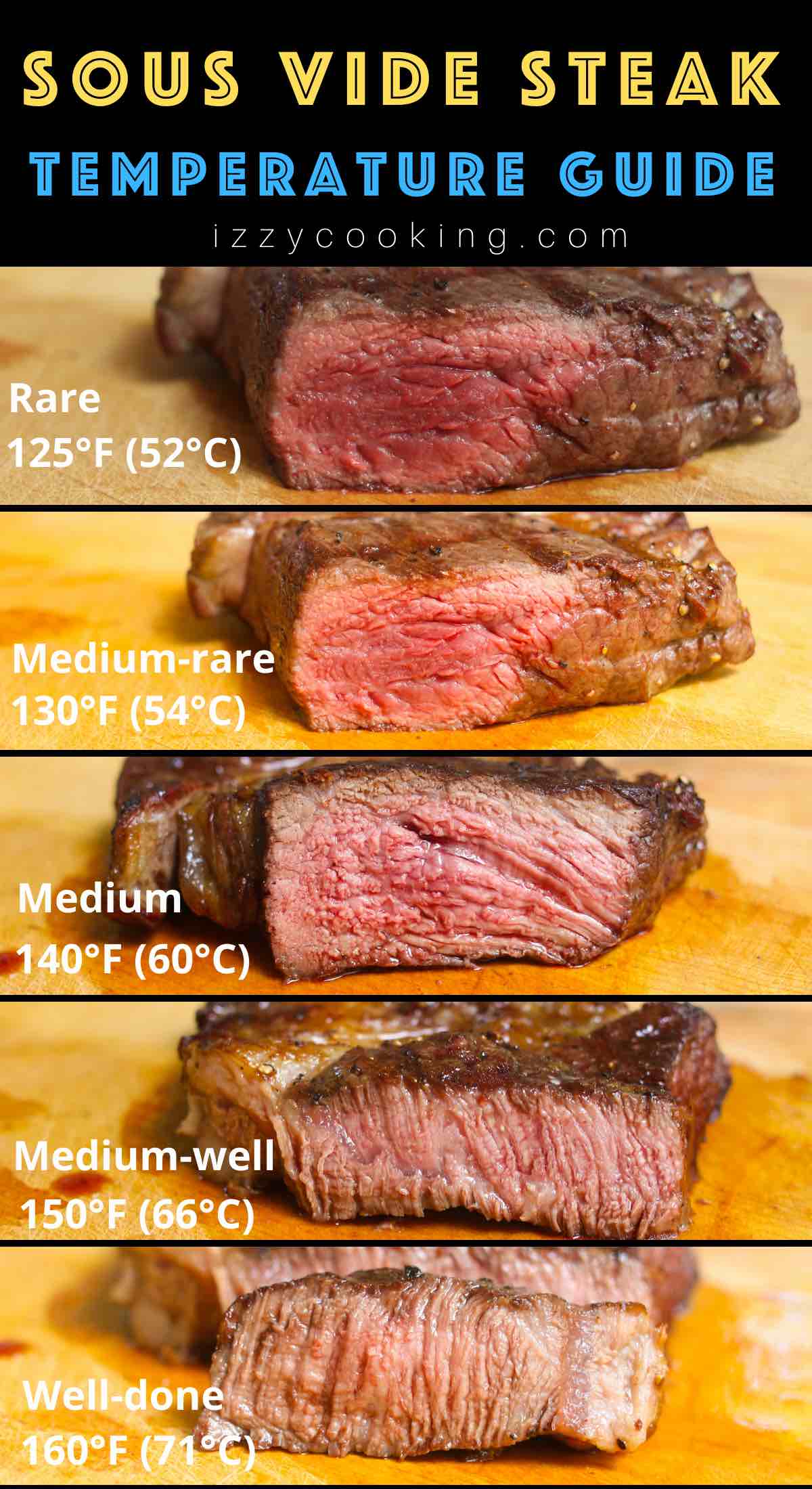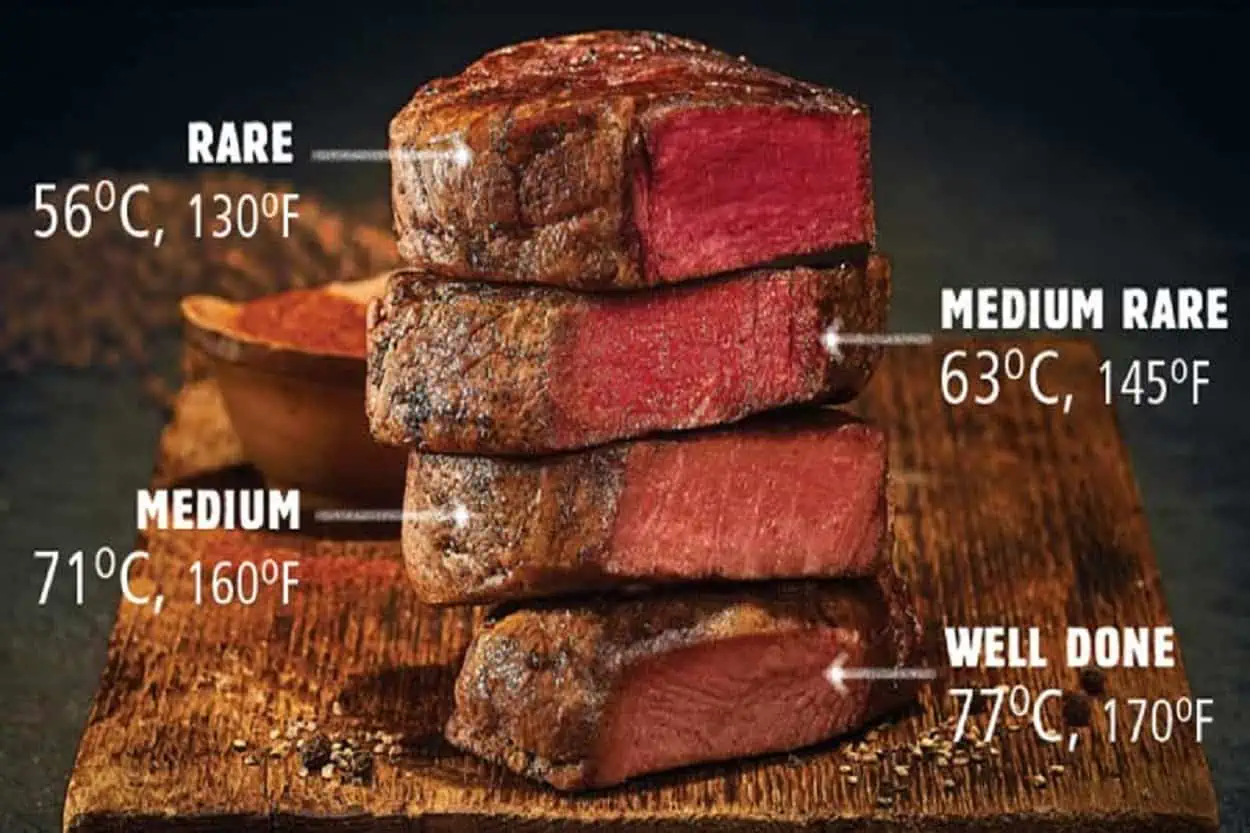What Temp Is A Steak Medium Rare? The Ultimate Guide To Perfectly Cooked Beef
When it comes to cooking steak, understanding the ideal temperature for medium-rare is essential for achieving that perfect balance of flavor and texture. Whether you're a seasoned chef or a home cook looking to elevate your culinary skills, mastering the art of medium-rare steak is a game-changer. This temperature not only locks in the juices but also ensures a tender, flavorful cut of meat.
There's nothing quite like biting into a perfectly cooked medium-rare steak. The rich, beefy flavor combined with a tender, pink interior is a delight for any steak enthusiast. But what exactly is the temperature that defines medium-rare? And how can you ensure you're hitting that sweet spot every time you cook?
In this comprehensive guide, we'll delve into the world of medium-rare steak, exploring the ideal temperature, cooking techniques, and tips to help you achieve restaurant-quality results in your own kitchen. Whether you're grilling, pan-searing, or using an oven, we've got you covered with expert advice and step-by-step instructions.
Table of Contents
- The Temperature Guide for Medium-Rare Steak
- Cooking Methods for Medium-Rare Steak
- Understanding Steak Doneness Levels
- Essential Tools for Perfect Temperature Control
- Why Resting Your Steak is Crucial
- Pro Tips for Cooking Medium-Rare Steak
- Variations in Steak Cuts and Temperatures
- Common Mistakes to Avoid
- Frequently Asked Questions
- Conclusion
The Temperature Guide for Medium-Rare Steak
One of the most critical aspects of cooking steak is understanding the ideal temperature for your desired level of doneness. For medium-rare steak, the ideal internal temperature is generally around 130°F to 135°F (54°C to 57°C). This temperature range ensures a juicy, tender steak with a pink center that retains its flavor and texture.
Why Temperature Matters
Temperature plays a crucial role in determining the final texture and flavor of your steak. Cooking steak to the correct temperature ensures that the proteins are denatured just enough to create a tender bite without overcooking the meat. Overcooking can lead to a dry, tough steak, while undercooking may result in a less flavorful experience.
Cooking Methods for Medium-Rare Steak
There are several methods to cook steak to medium-rare perfection. Each method has its own advantages and can be tailored to your equipment and preferences.
Pan-Seared Steak
Pan-searing is a popular method for achieving a delicious crust on your steak. Here's how you can do it:
- Heat a heavy-bottomed skillet over high heat.
- Add a small amount of oil, such as vegetable or avocado oil.
- Season your steak generously with salt and pepper.
- Place the steak in the skillet and sear for 3-4 minutes on each side.
- Use a meat thermometer to check the internal temperature.
Grilling Steak
Grilling is another excellent method for cooking steak, especially during warmer months. Follow these steps:
- Preheat your grill to high heat.
- Season your steak with your preferred seasoning.
- Place the steak on the grill and cook for 3-4 minutes per side.
- Monitor the internal temperature closely.
Understanding Steak Doneness Levels
Steak doneness levels vary from rare to well-done, each with its own temperature range. Here's a quick guide:
- Rare: 120°F - 125°F (49°C - 52°C)
- Medium-Rare: 130°F - 135°F (54°C - 57°C)
- Medium: 140°F - 145°F (60°C - 63°C)
- Medium-Well: 150°F - 155°F (66°C - 68°C)
- Well-Done: 160°F+ (71°C+)
Medium-rare strikes the perfect balance between juiciness and flavor, making it a favorite among steak lovers.
Essential Tools for Perfect Temperature Control
To ensure your steak reaches the ideal medium-rare temperature, you'll need the right tools:
- Instant-Read Thermometer: A digital thermometer is indispensable for checking the internal temperature of your steak.
- Meat Probe: For larger cuts, a meat probe can be inserted into the center of the steak for continuous monitoring.
- Cast-Iron Skillet: Ideal for achieving a perfect sear on your steak.
Why Resting Your Steak is Crucial
After cooking, it's essential to let your steak rest for a few minutes. This allows the juices to redistribute throughout the meat, ensuring a juicier bite. Cover the steak loosely with foil and let it sit for about 5-10 minutes before slicing.
Pro Tips for Cooking Medium-Rare Steak
Here are some expert tips to help you cook the perfect medium-rare steak:
Seasoning
Don't underestimate the power of simple seasoning. A generous amount of salt and pepper can enhance the natural flavors of the steak.
Thickness
Choose a steak that's at least 1-inch thick to allow for even cooking and a beautiful crust.
Variations in Steak Cuts and Temperatures
Different cuts of steak may require slight adjustments in cooking time and temperature. For example:
- Fillet Mignon: Cook to 130°F for medium-rare.
- Ribeye: Aim for 135°F for a juicy, flavorful result.
- Sirloin: Cook to 130°F for a tender bite.
Common Mistakes to Avoid
Avoid these common mistakes to ensure your medium-rare steak turns out perfectly:
- Overcooking: Keep an eye on the temperature to prevent overcooking.
- Not Resting: Skipping the resting step can result in a dry steak.
- Using Low Heat: Cook your steak over high heat for a better sear.
Frequently Asked Questions
Q: Can I cook steak to medium-rare in the oven?
A: Yes, you can cook steak to medium-rare in the oven. Preheat your oven to 400°F (200°C), sear the steak in a skillet, and then transfer it to the oven until it reaches the desired temperature.
Q: Is medium-rare steak safe to eat?
A: Yes, medium-rare steak is safe to eat as long as it's cooked to the appropriate internal temperature. The USDA recommends a minimum internal temperature of 145°F (63°C) for beef, but many steak lovers prefer the juiciness of medium-rare.
Conclusion
Cooking a medium-rare steak to perfection is an art that combines science and technique. By understanding the ideal temperature, using the right cooking methods, and following expert tips, you can achieve restaurant-quality results in your own kitchen.
Remember to:
- Use a meat thermometer for accurate temperature readings.
- Let your steak rest before slicing.
- Experiment with different cuts and seasoning to find your perfect steak.
We invite you to share your steak-cooking experiences in the comments below. And don't forget to explore our other articles for more culinary inspiration!
Data Sources: USDA, National Cattlemen's Beef Association


Detail Author:
- Name : Mauricio Johnston
- Username : carmine44
- Email : cielo02@huels.com
- Birthdate : 1982-08-08
- Address : 228 Margarette Extensions Hebertown, DE 45631
- Phone : 1-640-613-6877
- Company : Kunde, Hackett and Stokes
- Job : Administrative Support Supervisors
- Bio : Voluptas dolore earum id est dolorem qui ut. Aut quia iusto rerum aut accusantium est earum. Illum odit ipsam voluptatem nostrum placeat ea eius illum.
Socials
instagram:
- url : https://instagram.com/prudence.dickens
- username : prudence.dickens
- bio : Id eos sunt quae odio. Et voluptatem et et rem reprehenderit dolores.
- followers : 4456
- following : 2388
twitter:
- url : https://twitter.com/dickens1984
- username : dickens1984
- bio : Et qui numquam laborum odio. Dolores ad sint quasi dicta dolorem. Ea similique sed sequi.
- followers : 1747
- following : 2205
linkedin:
- url : https://linkedin.com/in/prudence3980
- username : prudence3980
- bio : Dignissimos cum nobis vero ducimus pariatur amet.
- followers : 1677
- following : 879
facebook:
- url : https://facebook.com/prudence_dickens
- username : prudence_dickens
- bio : Nulla nemo sequi accusamus officia. Recusandae sint sit dolores in.
- followers : 2443
- following : 659
tiktok:
- url : https://tiktok.com/@prudencedickens
- username : prudencedickens
- bio : Quia dolor quis ut ut facilis ut aut rerum.
- followers : 2828
- following : 379